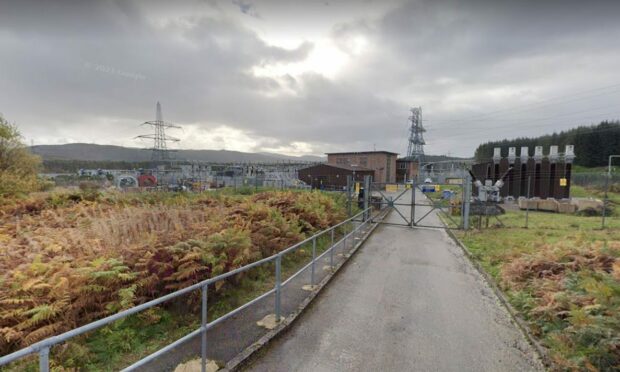Two conservation charities have criticised plans for Scotland’s largest hydro project over the detrimental impact it would have on ancient woodland.
Conservationists from both Woodland Trust Scotland and Trees for Life have raised objections over the planned route for the Coire Glas development in the Great Glen.
The SSE Renewables led development, about 19 miles south of Fort Augustus, is the largest hydro scheme to be developed in the UK for more than 30 years.
Coire Glas would be capable of a power output of up to 1500MW, powering around three million homes for periods of up to 24 hours.
Energy bosses propose to construct new power stations at both Coire Glas and Loch Lundie, with more than seven miles of overhead lines connecting the entire network with an existing station in Fort Augustus.
Conservationists fear for the potential “damage or loss” to a number of areas of ancient woodland including within Glengarry Pinewood.
Representatives from both charities say further justification is needed to protect areas of importance.
In a letter, a spokesman from Woodland Trust Scotland wrote: “We strongly oppose the proposed route option on the basis of potential damage and loss to a number of woodlands designated on the Ancient Woodland Inventory (AWI), including Glengarry Pinewood which is also listed on the Caledonian Pinewood Inventory.
‘The preferred route should fully consider all areas of ancient woodland’
“Ancient woodlands are irreplaceable habitats that must be protected from damage, loss and deterioration. It is imperative that any new development does not diminish these precious sites and that every possible measure is explored to prevent adverse impact.”
Energy bosses propose to construct a 400kV Air Insulated Switchgear (AIS) Switching Station near Coire Glas and a new 400kV substation in the vicinity of Loch Lundie, transporting power along an overhead line spanning around 2.2miles.
Developers also propose the construction of a 5.3mile overhead line from the proposed substation at Loch Lundie to the firms existing substation at Fort Augustus.
Environmentalists say that the hydro scheme would impact around five areas of ancient woodland including an area within Glengarry Pinewood, one of just 84 ancient pinewood remnants left in Scotland.
The added: “The Woodland Trust has serious concerns about the proposed construction of a new 400kV overhead line and the siting of the proposed Coire Glas 400kV switching station on the grounds of potential significant impact to ancient woodland.
“Based on our assessment, at least five ancient woodlands will be within the preferred route path, which is likely to lead to direct loss and removal of these irreplaceable habitats.
“We are also concerned that all potential overhead line route options considered at this stage would have led to the loss of ancient woodland.
“In summary, the Woodland Trust strongly opposes this scheme on the grounds of serious impact to several areas of ancient woodland. The preferred route should fully consider all areas of ancient woodland and protect them from detrimental impact and loss. This objection is also supported by Trees for Life.”
A spokeswoman for SSEN Transmission said: “While no final route has been selected for the Coire Glas connection project, we are in the process of reviewing the feedback received on our preferred alignment and location of switching stations, and are working with key stakeholders to identify potential mitigations before we present updated proposals for the project.
“We will continue to keep all stakeholders updated as we progress with the development of this scheme.
““As one of the first developers to implement a sector leading Biodiversity Net Gain strategy for all new projects by 2026, and a commitment to no net loss in woodland cover, we are committed to leaving a positive lasting legacy within the environments which host our infrastructure as we deliver a network for Net Zero in the north of Scotland.”


Conversation